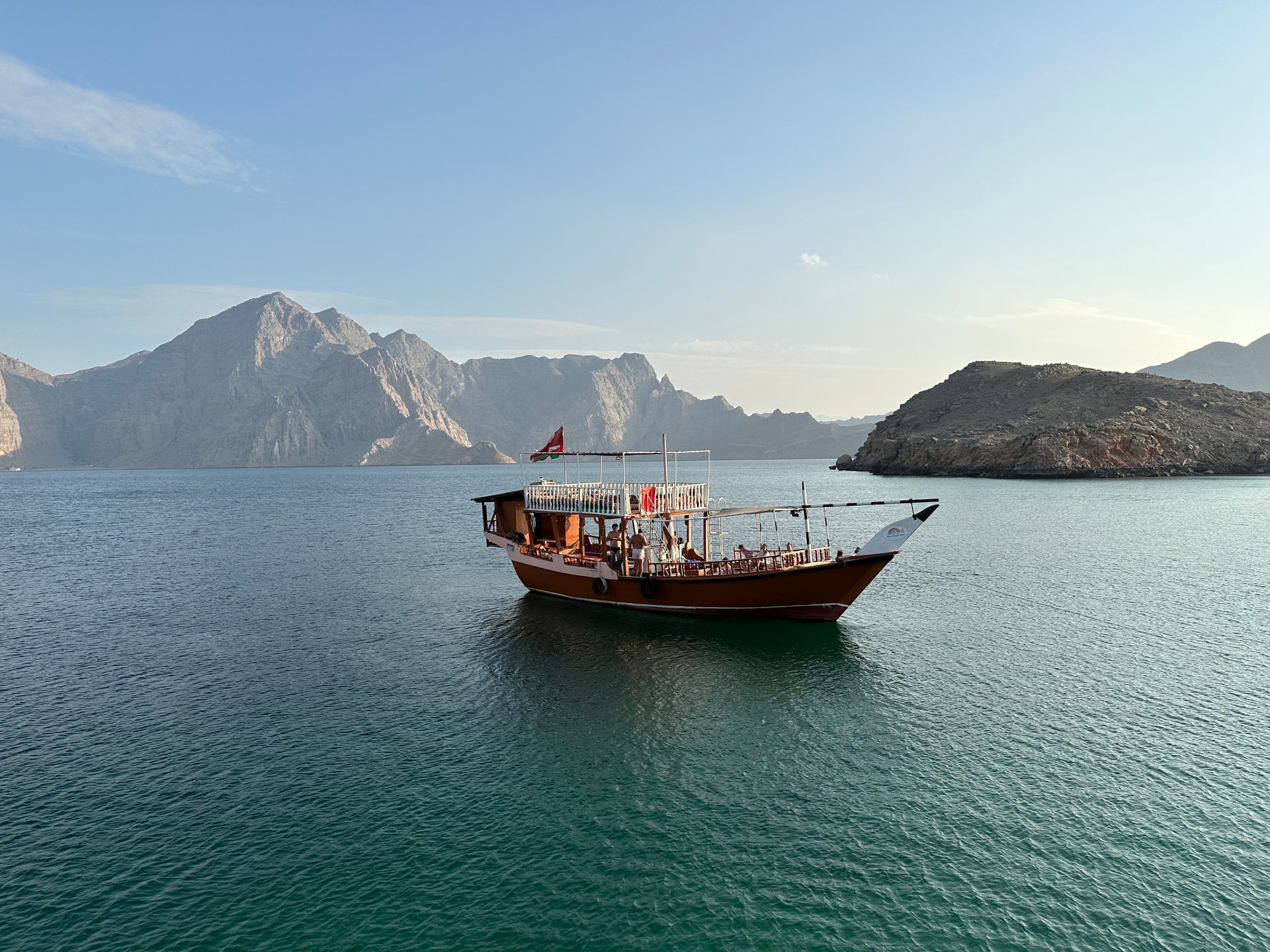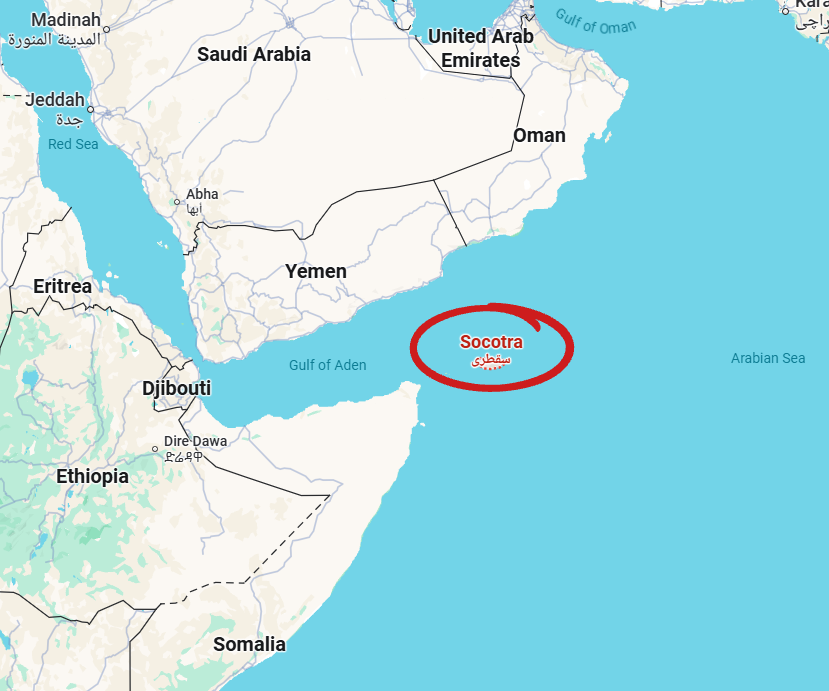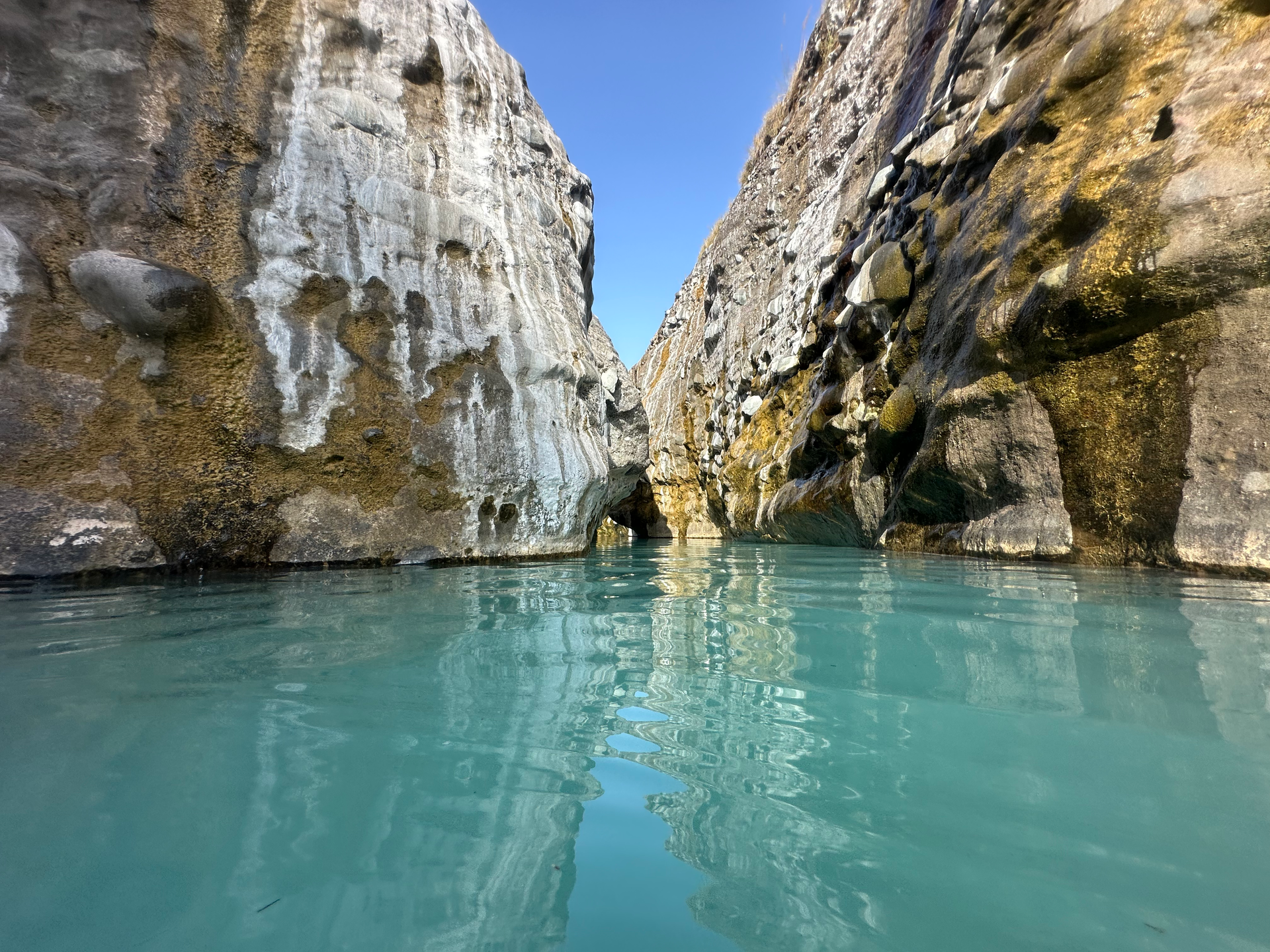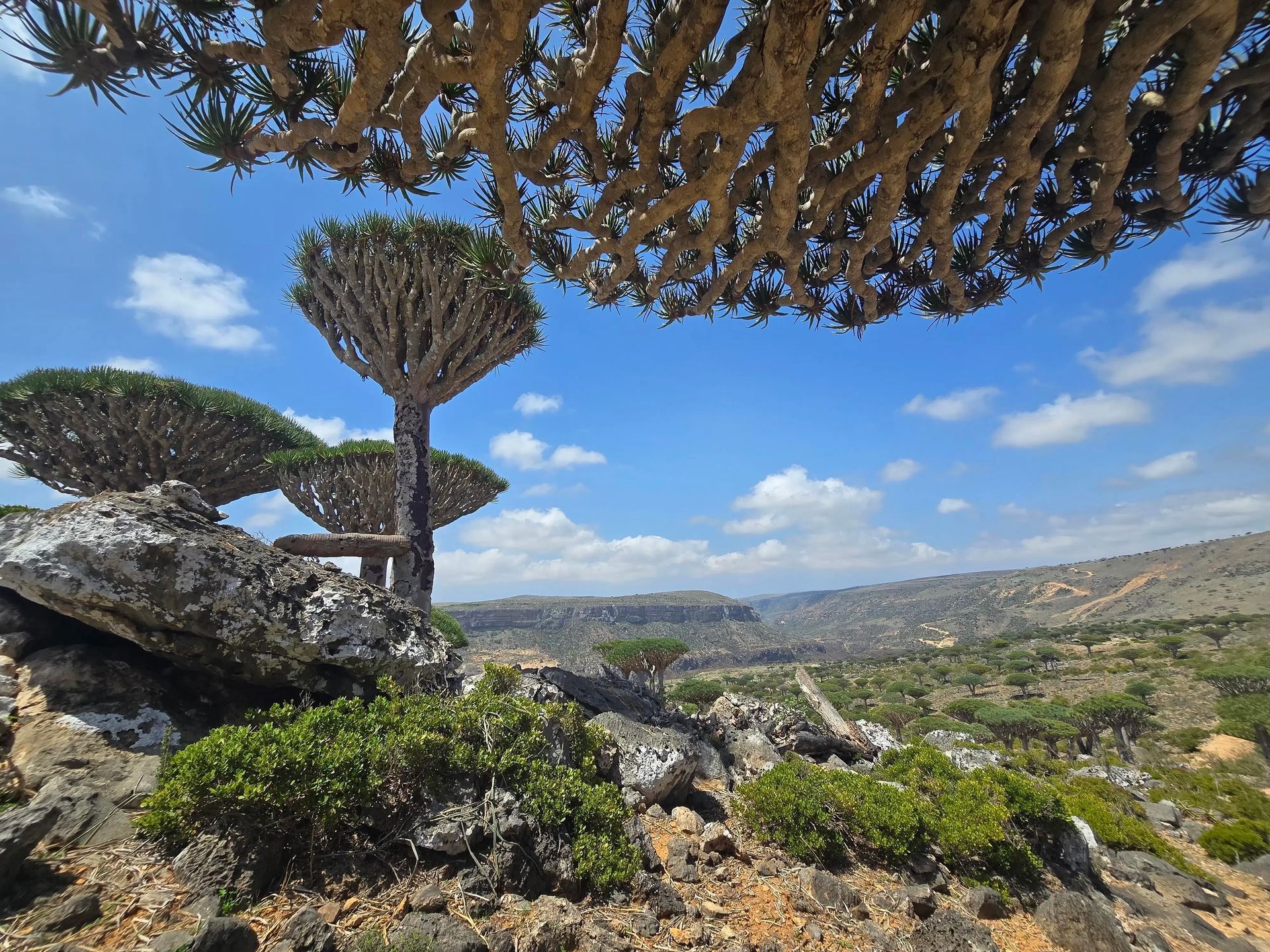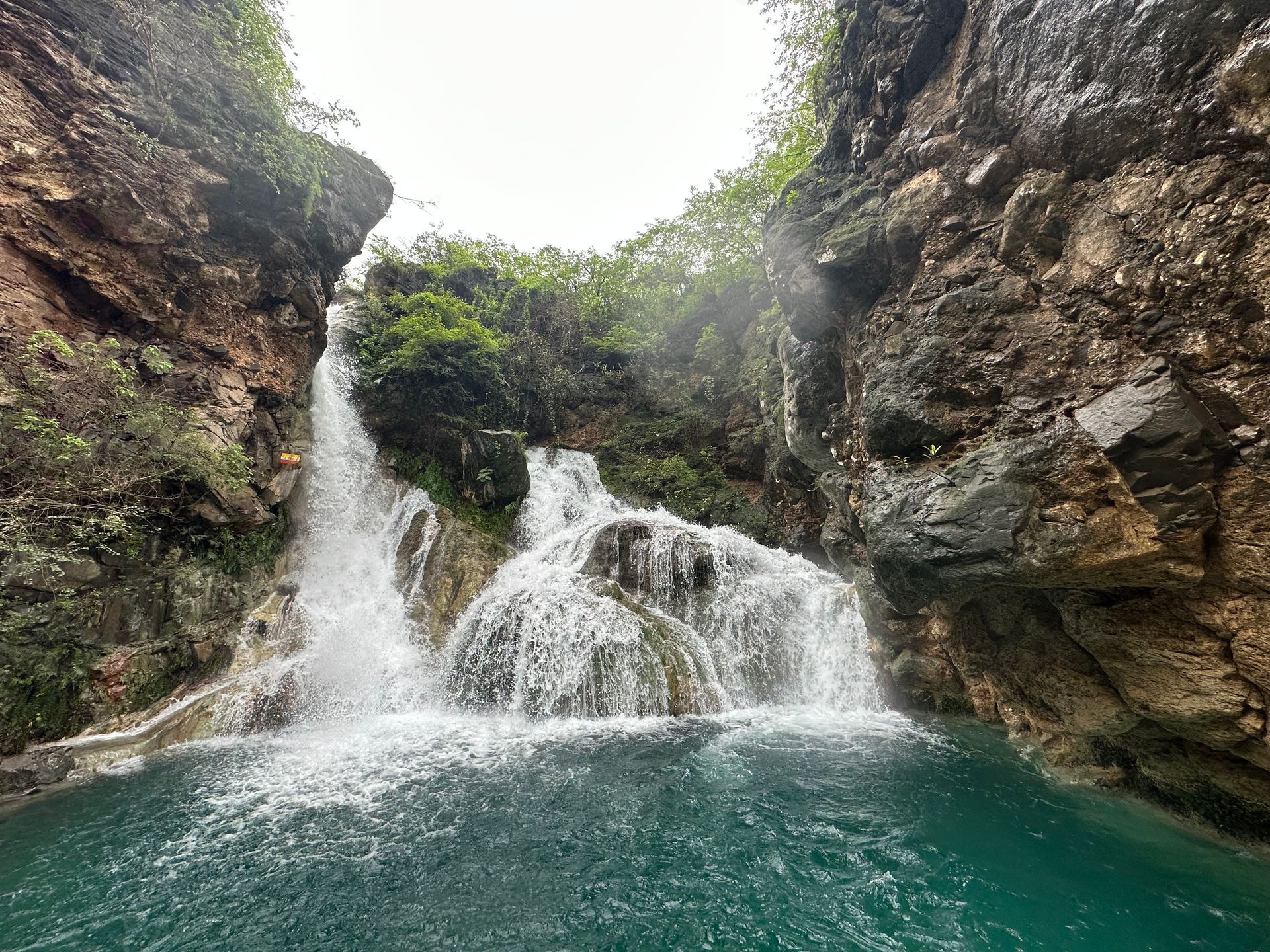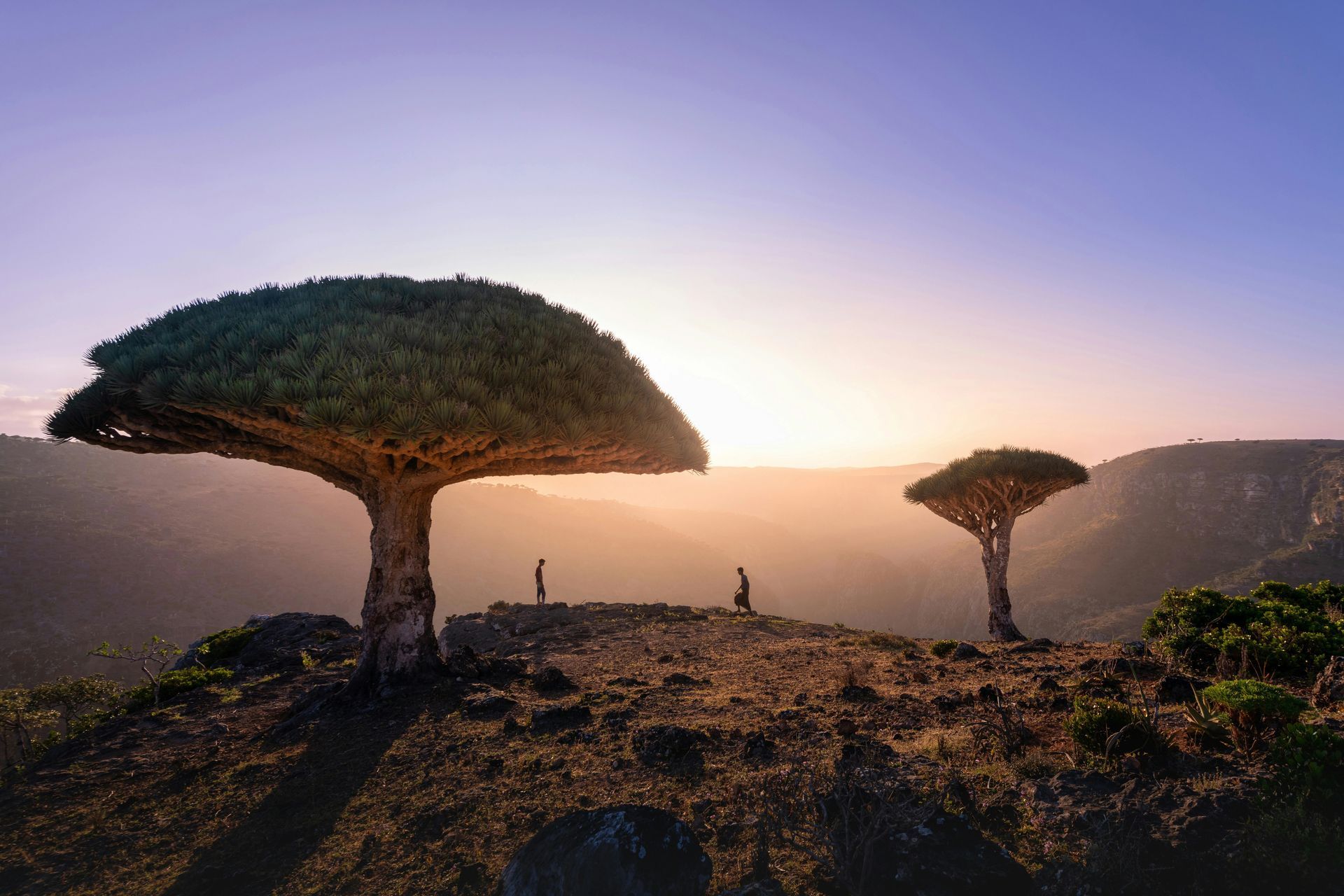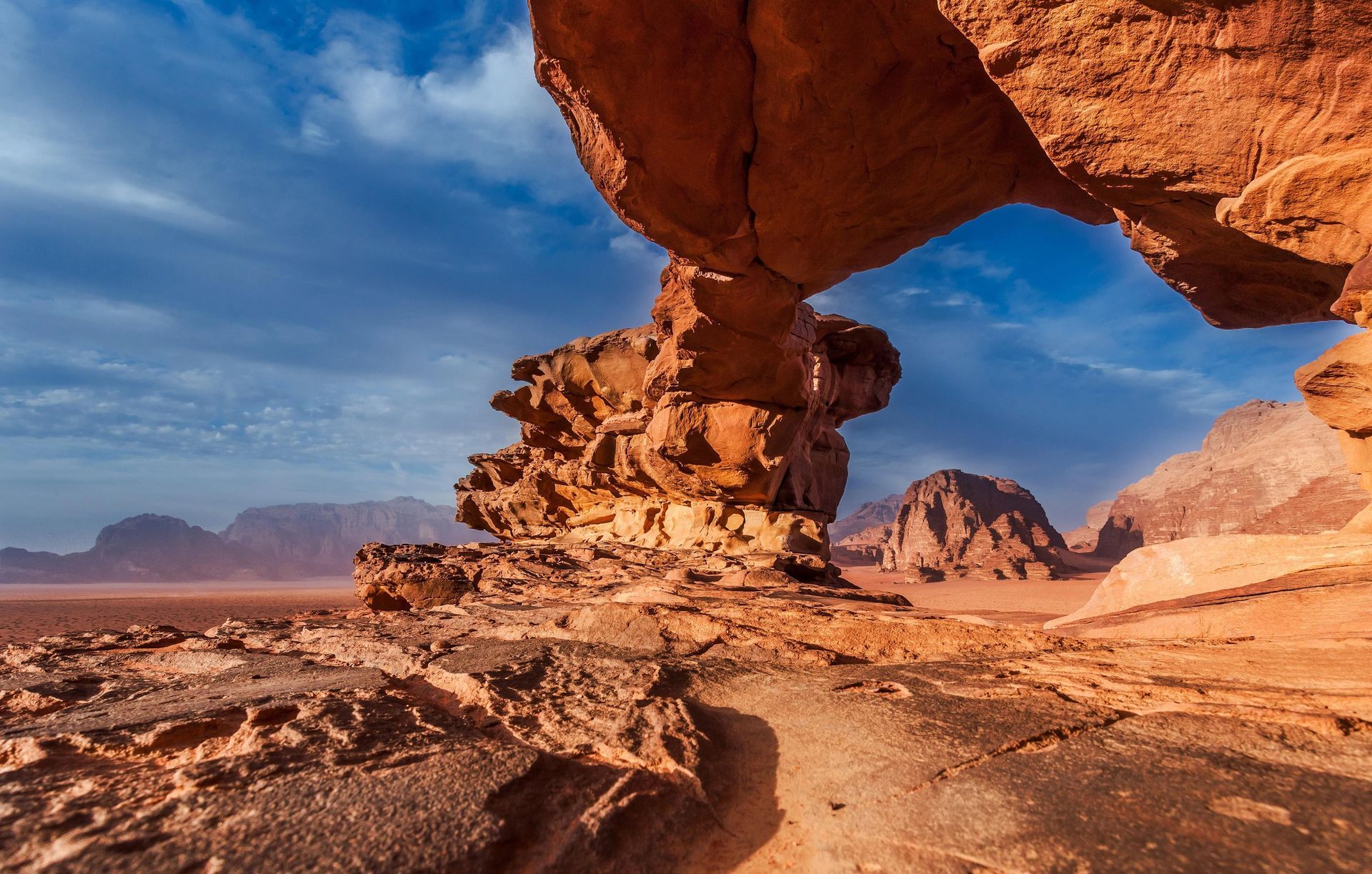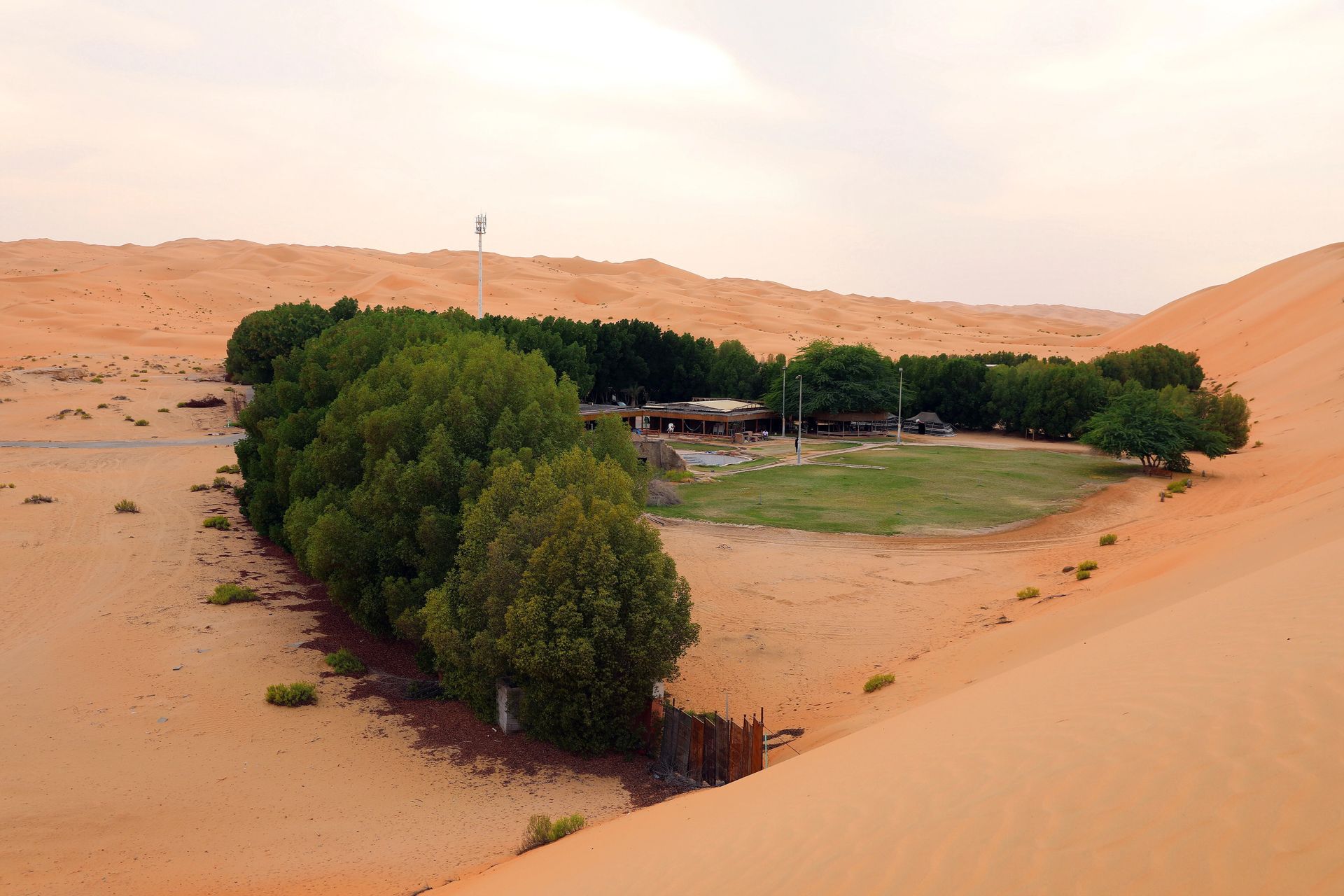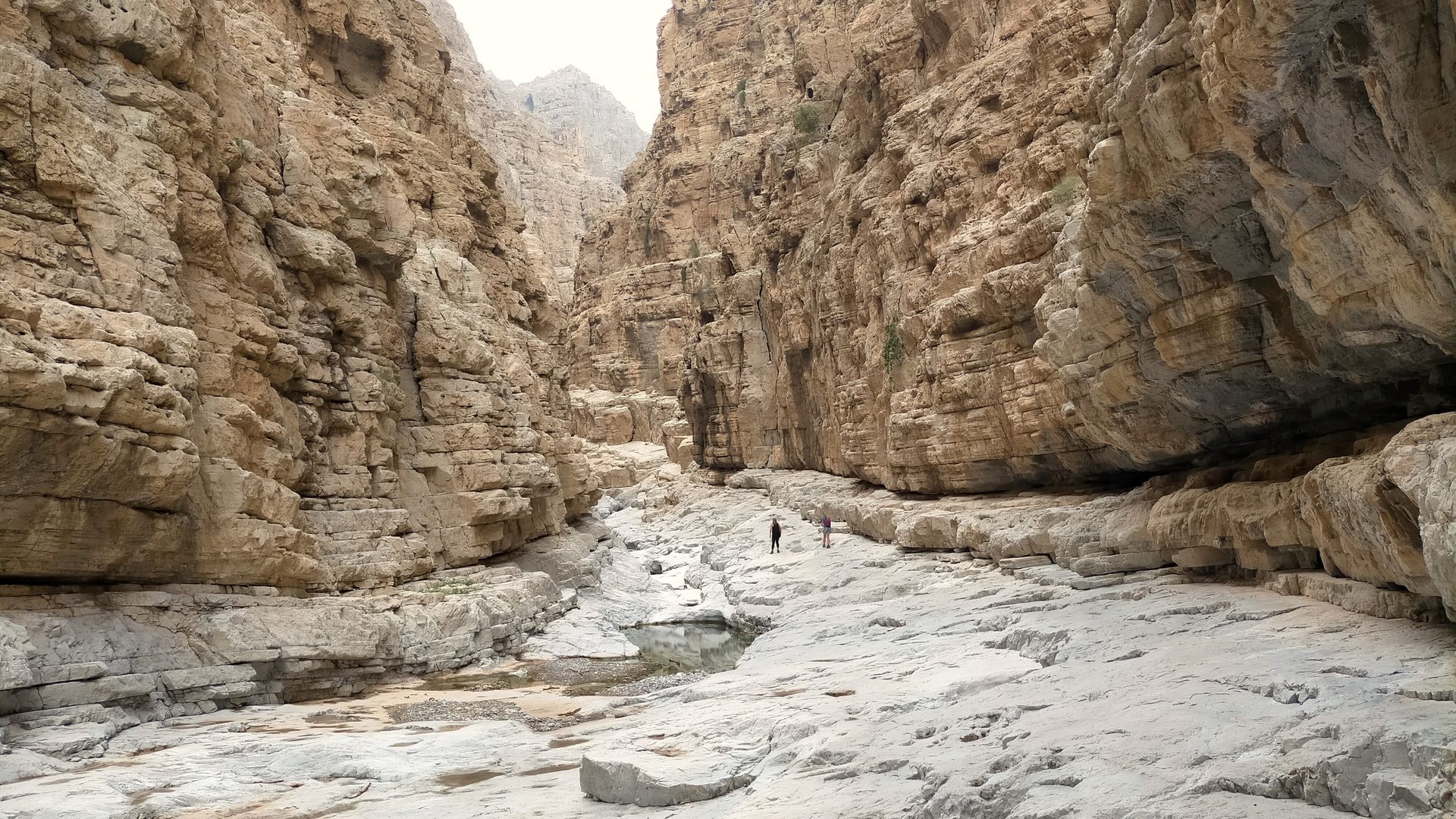Socotra Island: All You Need to Know When Visiting the Island
Socotra Island - often called the “Galápagos of the In dian Ocean” - is one of the most unique and untouched places on Earth. Known for its surreal landscapes, endemic dragon blood trees, and warm-hearted people, it’s a dream destination for nature lovers and explorers alike.
Here’s everything you need to know before you embark on your adventure to Socotra with Arabian Wanderers.
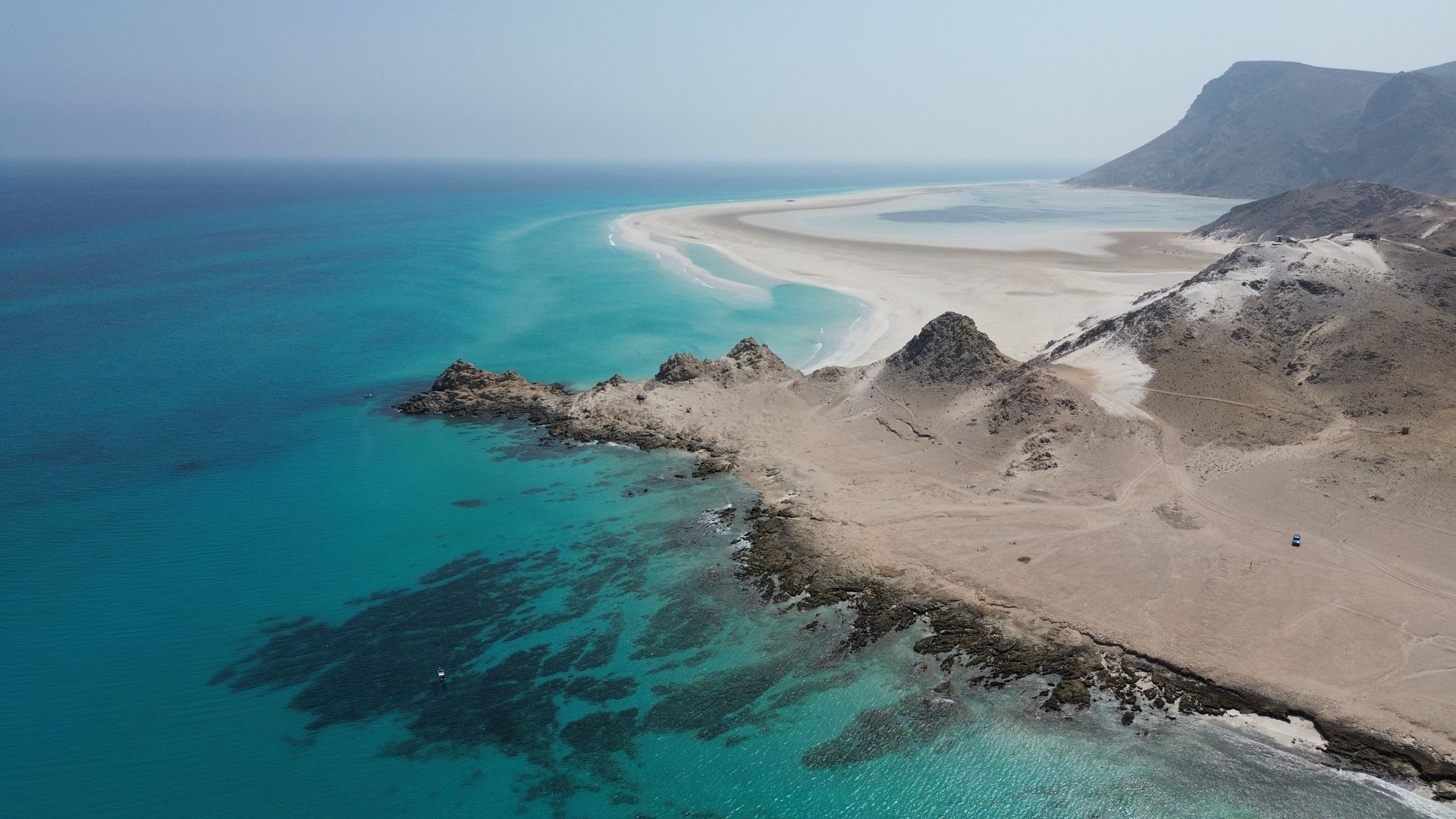
Aerial view of Socotra Island’s coastline with turquoise waters, white dunes, and dragon blood trees.
Is Socotra safe?
Socotra Island is very safe.
The island has always been difficult to reach, especially in the past years where it has been isolated from the rest of the world due to the Yemeni civil war. However, Socotra has never been affected by the dynamics of the mainland.
Generally, there is very little crime in Socotra, and the local people are incredibly friendly.
The most dangerous part of traveling to Socotra is tripping over your own feet while admiring the views during a hike.

Where is Socotra island located?
Socotra lies in the Indian Ocean between the Arabian Peninsula and the Horn of Africa, located around 240 km east of Cape Guardafui (Somalia) and 380 km south of Ras Fartak (Al Mahrah, Yemen).
Together with its neighboring islands - Abd Al-Kuri, Samha, and Darsa - Socotra forms the Socotra Archipelago, one of the most botanically diverse island groups in the world.
It’s one of the most isolated landforms on Earth of continental origin, meaning it’s non-volcanic but a fragment of the ancient southern supercontinent of Gondwana.
How to get to Socotra?
Since the reopening of the commercial air route to Socotra, the Abu Dhabi–Socotra connection has become 100% reliable, allowing tourism on the island once again.
Today, you can reach Socotra with 2-weekly non-stop flights from Abu Dhabi, scheduled every Tuesday and Friday.
It’s a government-operated charter flight and does not offer online booking yet. This means that in order to secure a seat on this in-demand flight, you’ll need to book through a licensed local operator such as Arabian Wanderers, who will handle your flight arrangements.
⚠️
Flights to Socotra get fully
booked several months in advance,
especially during the
peak season
between
November
and April.
We strongly recommend booking
your tour
at least 5–6 months ahead to guarantee your flight seats.
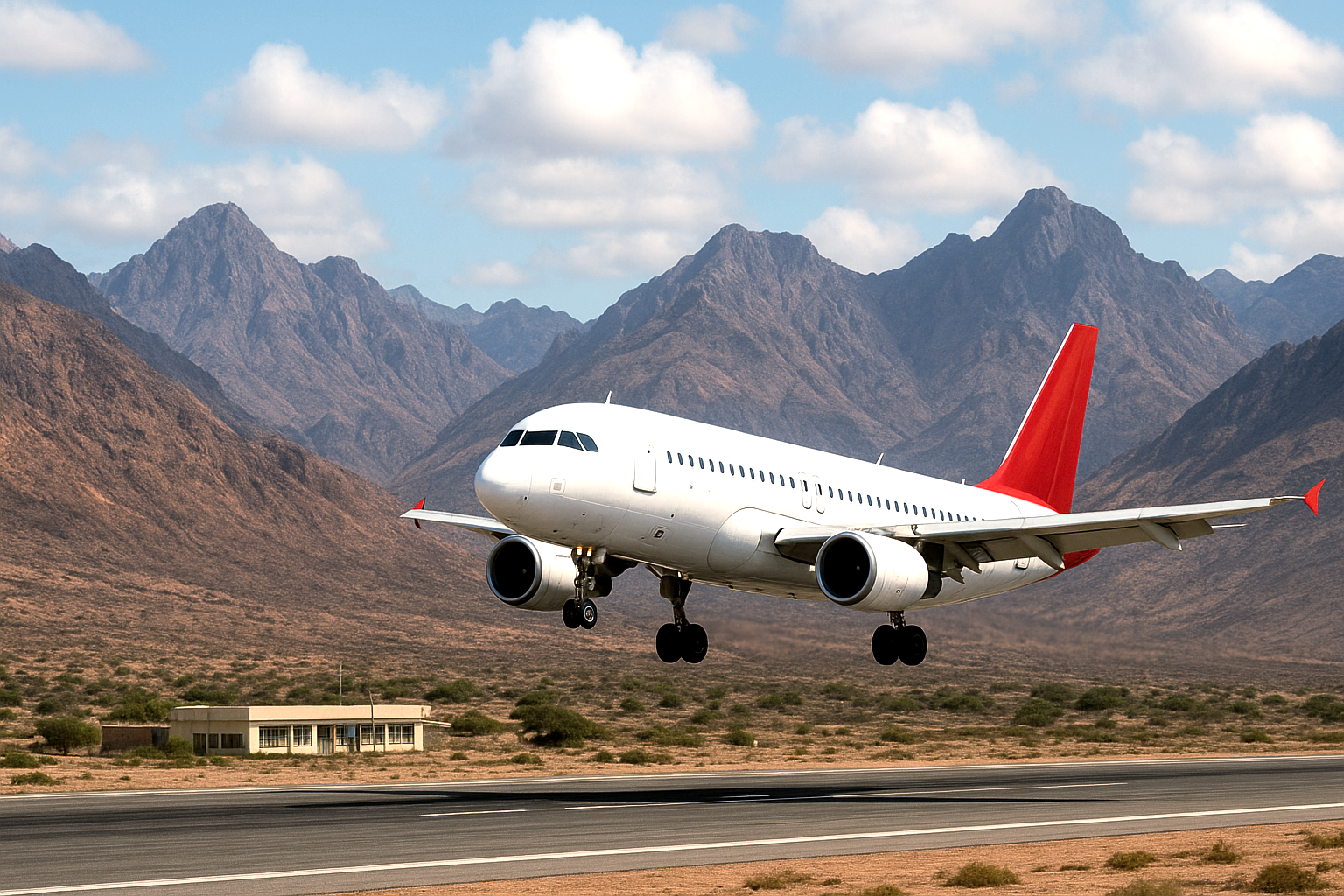
Do you need a visa to visit Socotra?
Yes. All tourists require a Yemeni visa to visit Socotra Island. The process is simple and handled entirely by Arabian Wanderers.
All we need is a
digital copy of your passport’s main page, and within a few days your visa will be ready.
You’ll receive a digital copy by email, which you’ll present at the
Abu Dhabi check-in counter
before your flight. The original visa will be handed to you upon arrival at Socotra airport.

Tourist handing passport for Socotra Island visa processing at Abu Dhabi airport.
Will travel to Socotra affect my travel to other countries?
While Socotra is part of Yemen, immigration officials understand that travellers may be concerned about having a Yemeni stamp in their passport.
You can request
that your visa be stamped on a separate paper instead, and the officers will gladly accommodate your request. This ensures your passport remains unaffected for future travels.
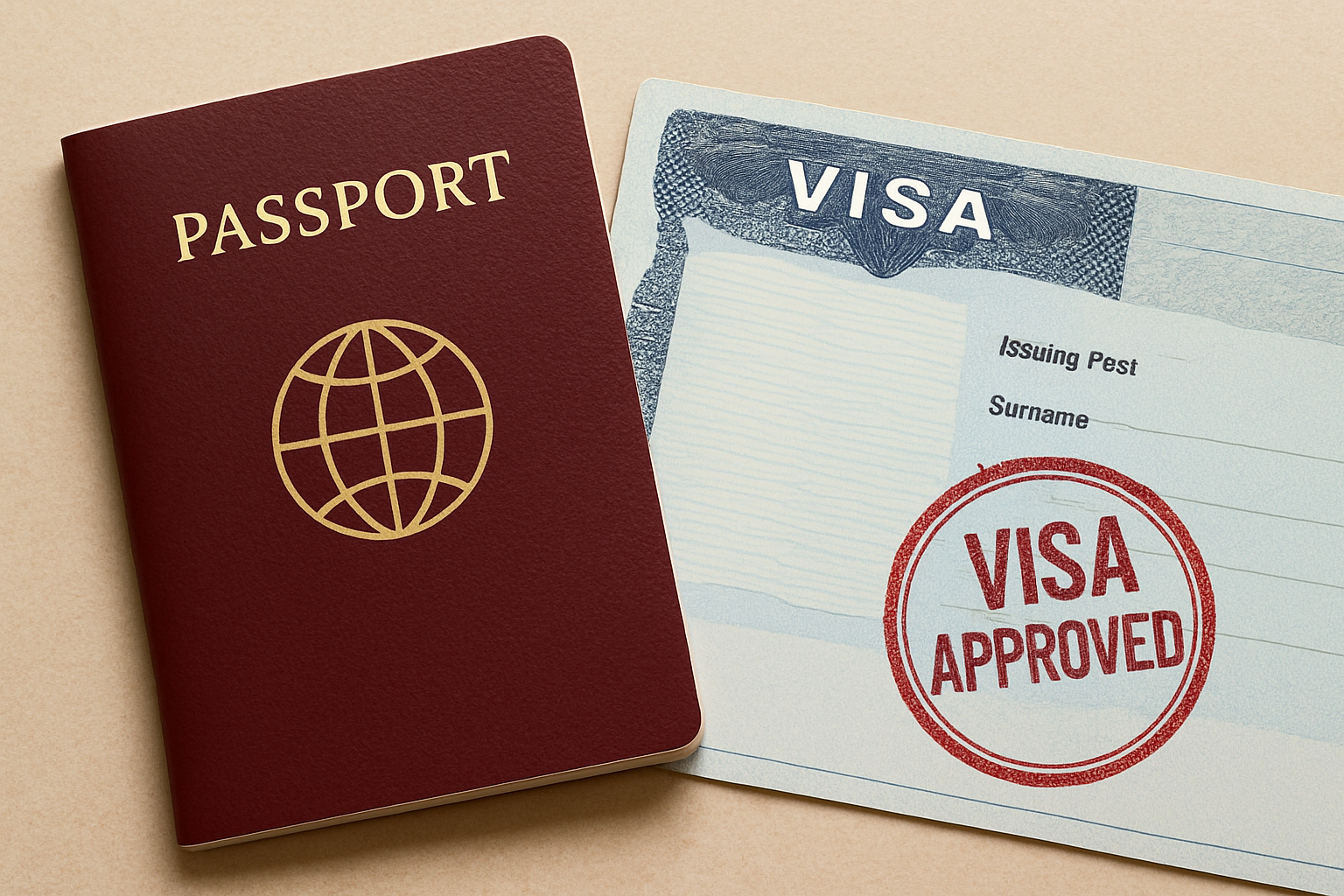
Yemeni visa stamped on a separate paper for travel to Socotra Island.
When is the best time to visit?
Tours operate from October to April, each period offering a distinct natural charm:
- October – November: Lush green landscapes, seasonal waterfalls, and occasional whale shark sightings.
- December – February: Cooler weather, the beginning of Bottle Tree blooming, lush scenery, and possible whale shark encounters.
- March – April: Warm weather, calm seas ideal for snorkeling, and peak Bottle Tree blooming season.
May
to
September is the monsoon season — with high winds and rough seas — and tours do not operate during this time.
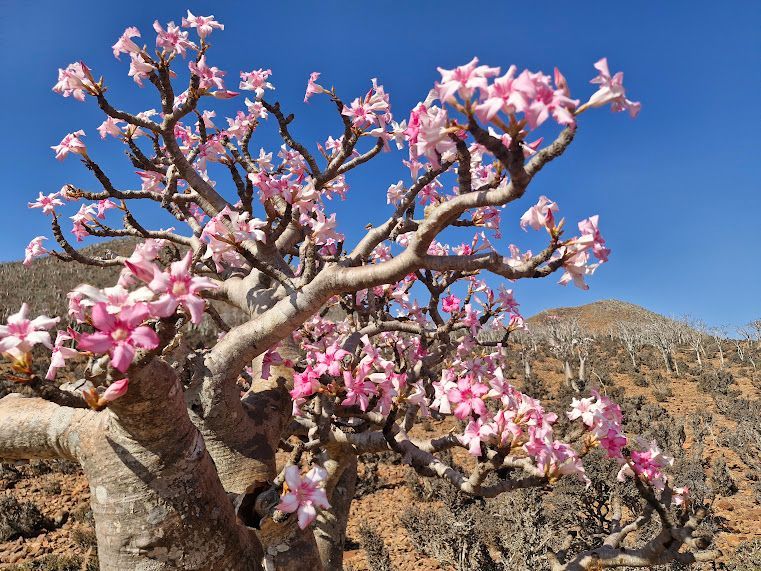
Bottle tree in bloom during spring.
Can I bring my drone?
Yes, you can bring your drone to Socotra — just let us know in advance.
Arabian Wanderers will handle your drone permit request, and you’ll simply pay a $100 fee upon arrival at the airport.
You are free to fly your drone across the island, provided you follow basic safety rules regarding distance from people, towns, and wildlife.
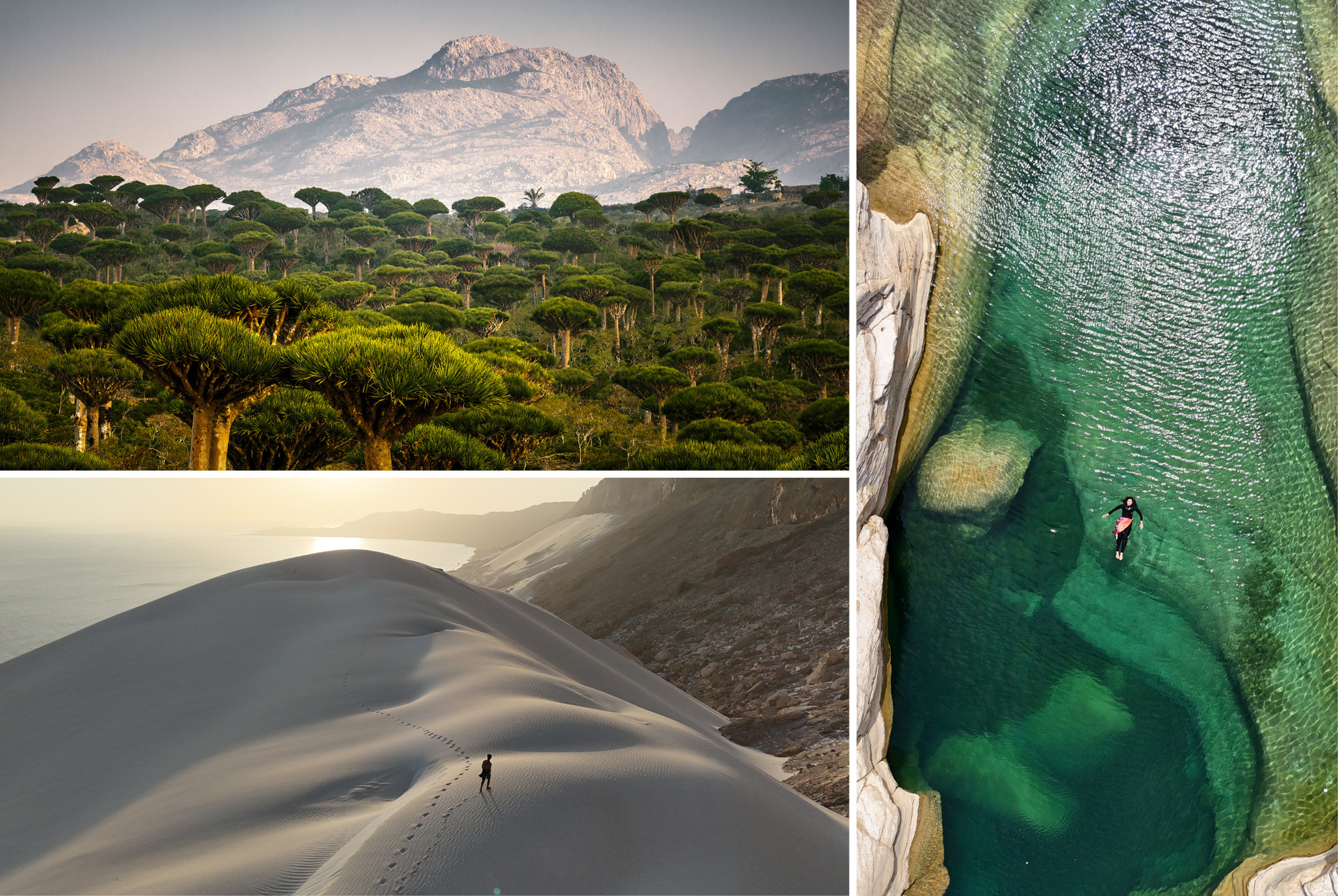
Drone flying over the Dragon's Blood Tree Forest (Fermhin), the Natural Infinity Pool (Homhil Protected Area) and the Arher Sand Dunes.
What’s included in the Tour?
When you book your expedition with a licensed tour operator, your experience will be fully inclusive and worry-free.
Services Included:
- English-speaking Socotri guide
- 4x4 Toyota Land Cruiser
- Double tent for single use (larger tents for couples)
- Mattress, bed sheets, pillow, pillow cover, and blanket
- Airport transfers in Socotra
- 3 meals per day plus snacks
- Purified drinking water, coffee, tea, and soft drinks
- All camping, protected area, and permit fees
- Boat ride to Shoab Beach
- Local guides for specific excursions
- And, of course, a whole lot of
epic adventures and hidden spots!
Convoy of 4x4 vehicles driving through the mountains of Socotra Island.
During our best-selling 4-night or 7-night itinerary, you’ll camp in some of the most breathtaking corners of the island.
You’ll be provided with a spacious personal tent,complete with a mattress, bedsheet, blanket, pillow, and pillowcase for maximum comfort.
For the more remote areas, our team sets up portable toilets and showers, while in less remote locations, you’ll enjoy built facilities for extra convenience.
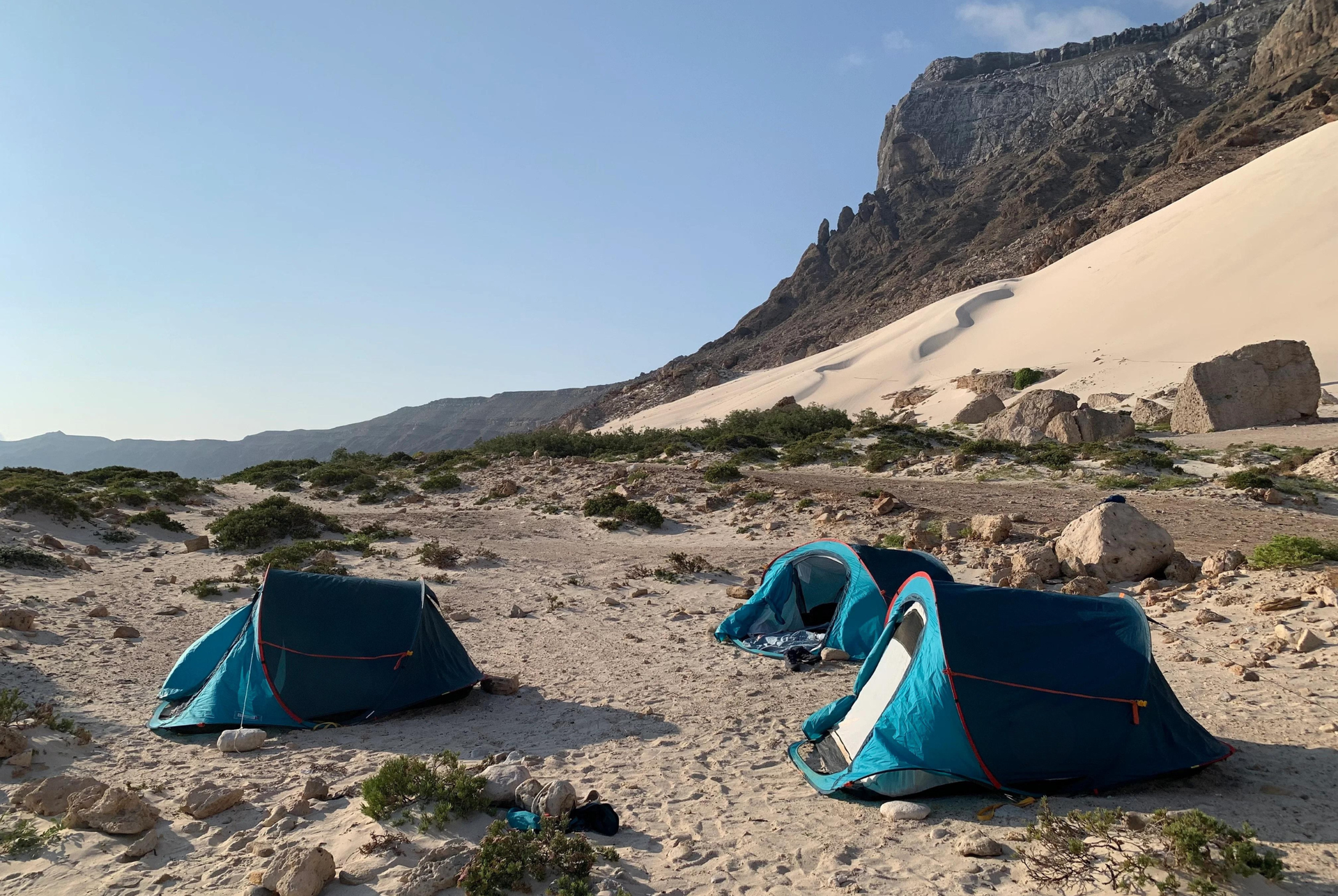
What will I eat?
After long days of exploration, enjoy freshly prepared meals made by local chefs.
You’ll be served three meals a day, featuring delicious Socotri recipes and fresh local ingredients. Expect:
- Fresh seafood
- Mixed salads
- Lamb stew
- Grilled tuna
- Fried chicken
- Local bread and honey
Vegetarian, vegan, and other dietary restrictions can be catered to with advance notice.
As part of our
commitment to sustainability, every traveler receives a
reusable water bottle to minimize single-use plastic on the island.
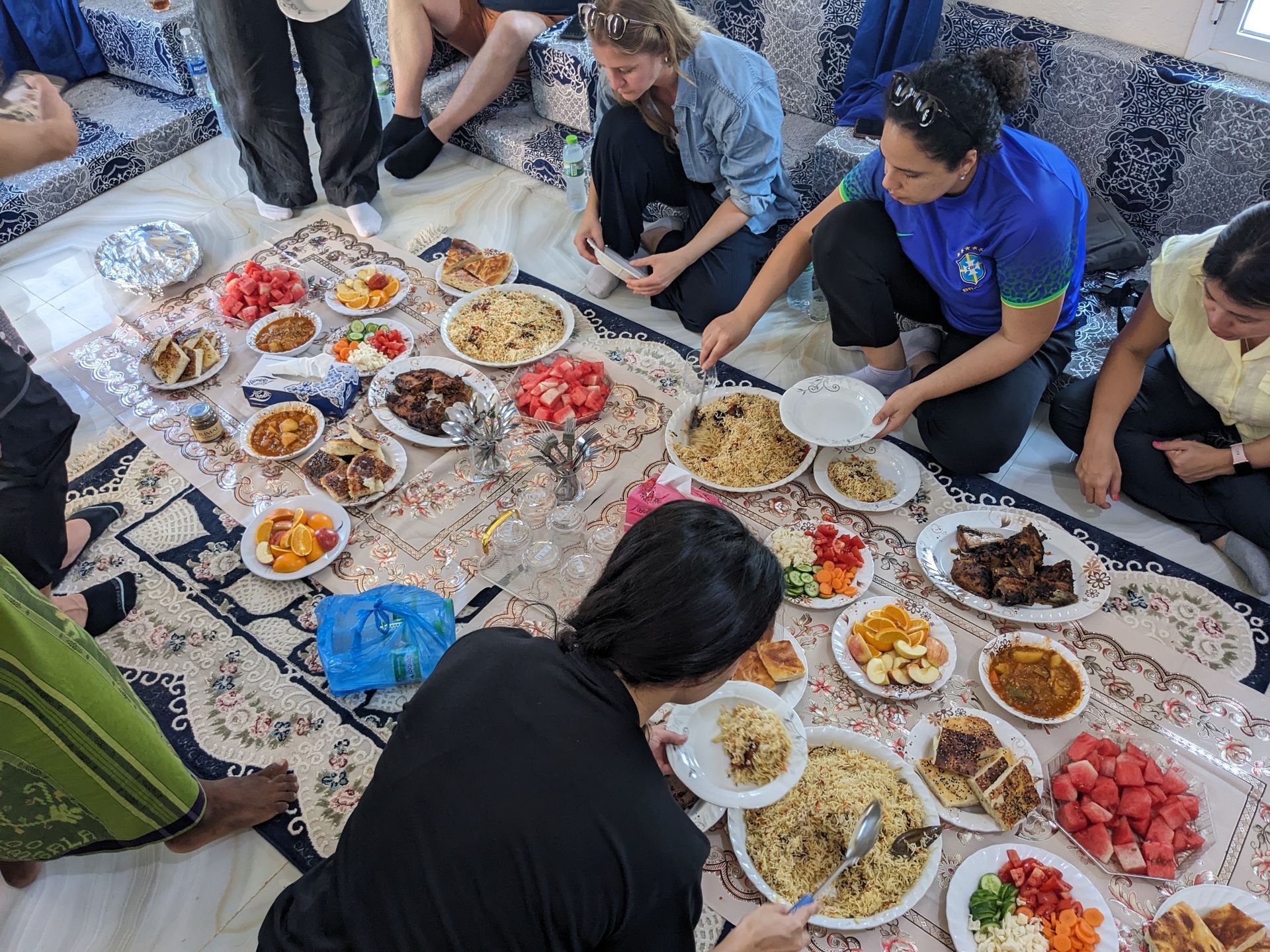
To make the most of your Socotra adventure, here’s what we recommend packing:
- Comfy, airy clothes (especially March–April)
- Women should cover shoulders and knees in villages
- Hiking clothes and shoes
- A warm layer for windy evenings
- Swimsuit and towel
- Hat or scarf for sun protection
- Watershoes (recommended)
- Eco-friendly toiletries and reef-safe sunscreen
- Headlamp
- First aid kit and personal medication
- Passport and cash (only new USD accepted)
- Power bank and electronics or camera gear
Tip:
Use backpacks or duffle bags — they make logistics and camping much easier on the island!
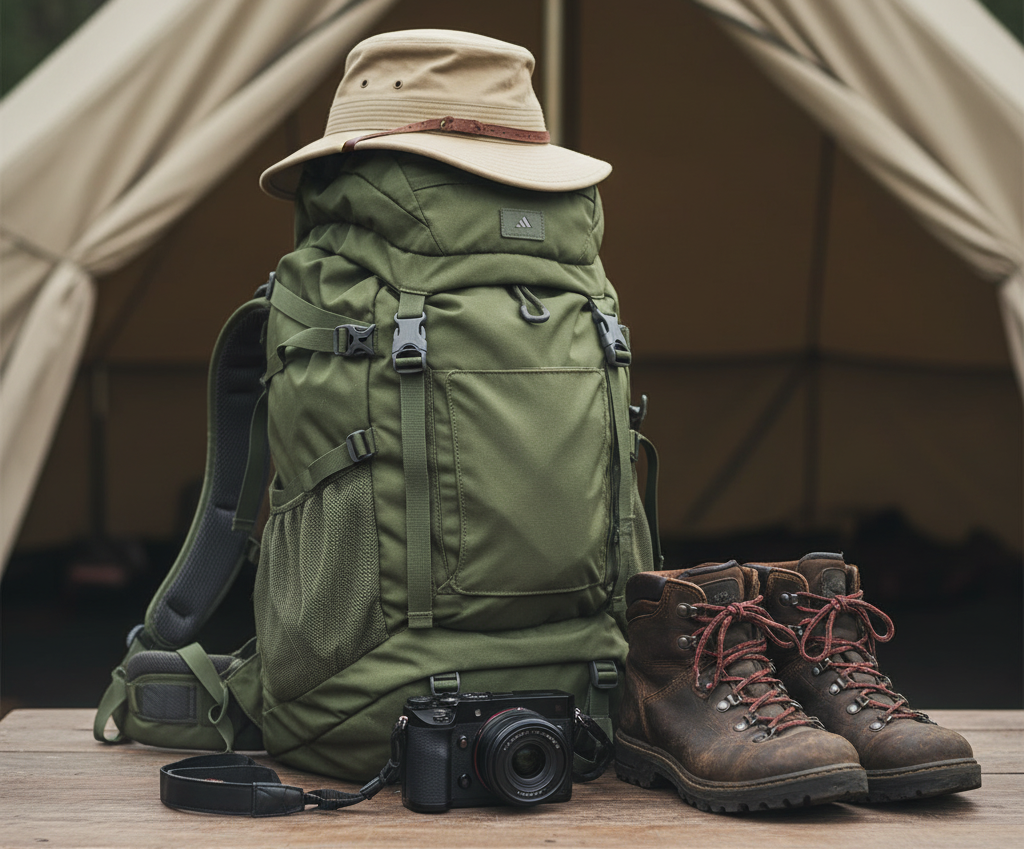
Travel essentials for Socotra Island including backpack, hat, hiking shoes, and camera.
Why choose Arabian Wanderers for Socotra?
- Responsible tourism and fair treatment of local communities
- Deep knowledge of the terrain and hidden gems
- Seamless logistics from visa to return flight
- Small groups for a more intimate and personalized adventure
Thanks to our passion for exploration and our local team, we bring you closer to Socotra’s untouched beauty — responsibly and comfortably.
Book your spot now on our
8 days
or
5 days
trip or
reach out
to our team for recommendations based on your travel dates!
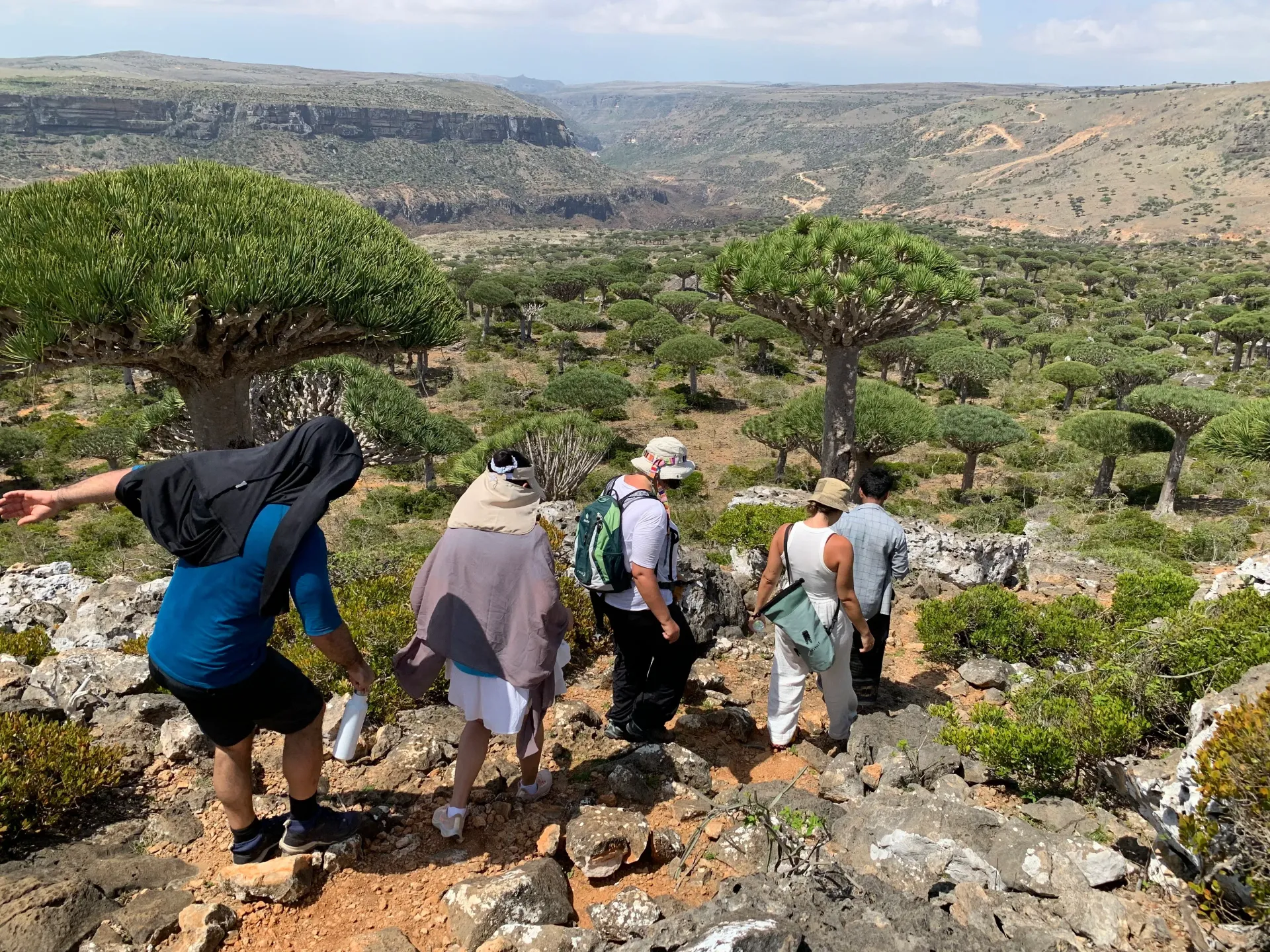
This blog has been brought to you by Arabian Wanderers
— the world’s leading experts in Arab world adventure travel, guiding unforgettable journeys through Socotra, the remote deserts of the UAE (Al Quaa, Jebel Jais, Liwa), the wild beauty of Oman (Musandam, Salalah, Muscat, Snake Canyon), the cultural treasures of Saudi Arabia (Aseer, AlUla), and the ancient wonders of Jordan — among others.
